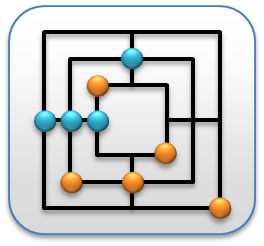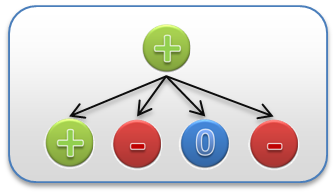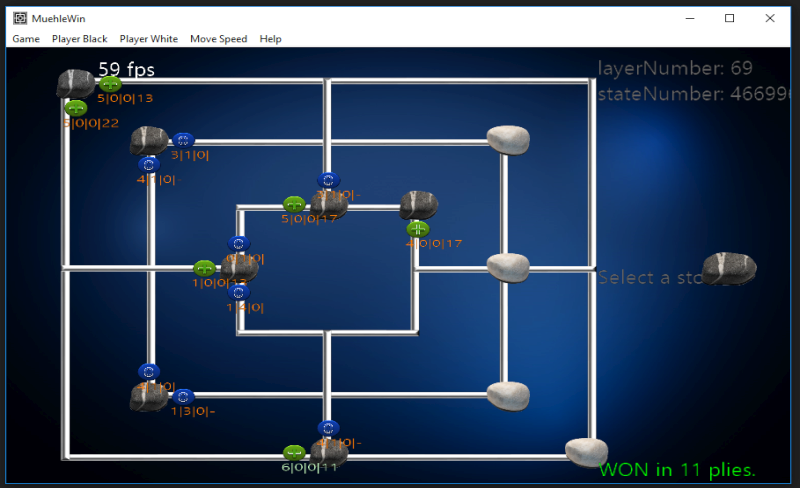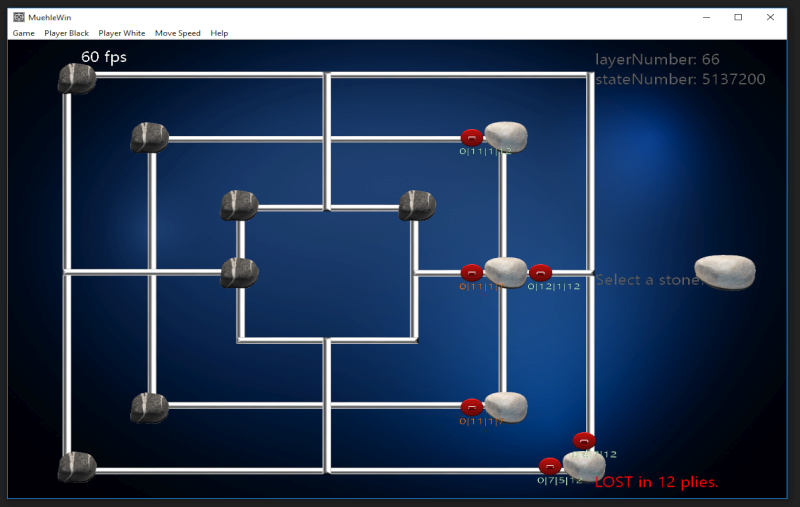
The game is played by two players and includes nine white stones, nine black stones and the game board (see Figure below) with 24 fields.
The gameplay consists of three phases and will be played through in the following order: setting phase, moving phase and jumping phase.
During the setting phase each player places in turn one of his nine stones on a free field. The moving phase is characterized,
as the name suggests, by alternately pulling the stones along the marked lines, which each connects two fields. The final jumping phase is
initiated by the player who is in possession of only three stones, who are allowed to therefore jump with his stones on each free field.
A so-called mill will be closed by the arrangement of three stones of a player in a row. This can be the case in any of the three phases
of the game and has the immediate removal of any opponent's stone as consequence, provided it is not part of a closed mill.

The principle of the perfect playing Nine Men’s Morris game computer is based on a database that contains information about any
game situation. Each game situation is from the perspective of the player who is currently in turn. The stored information for
each game situation consists of 'state value' and the minimum number of moves to win or the maximum number of moves until the
game is lost, called 'ply value'. The ply value is a natural number and the state value may be in one of the following four values:
| +, | if winning is possible, regardless of the actions of the enemy, |
| 0, | if the outcome of the game is a draw, |
| -, | if the opponent can win with perfect play, |
| x, | if the situation has not yet been calculated or is invalid. |

The consequence of each move is marked with one of the following three symbols and described with 4 numbers:
5 | 0 | 0 | 22 |
Game won in 22 moves - The next move will have 5
The next move will be performed by the opponent, if no mill is going to be closed. |
|
4 | 1 | 0 | - |
Drawn game - The next move will have 4
Here of course no ply value can be calculated, since a drawn game lasts until forever. |
|
0 | 11 | 2 | 7 |
Lost game in 7 moves -
The next move will have 11 |


Exe-File (Database must also be downloaded.):
MuehleWin_Executable_ver1.0.zip (Version 1.0, 1. Jan 2019, 206KB, Win10, DirectX 11)
Database (CAUTION: 8,3 GB !!!):
MuehleWin_Database_ver1.0.zip (Version 1.0, 1. Jan 2019, 8'300 MB)
Sourcecode:
GitHub repositories Muehle and weaselLibrary
Documentation:
The perfect playing Nine Men Morris computer.pdf (1. Dez 2009)